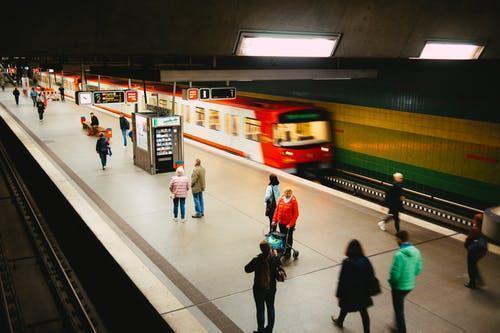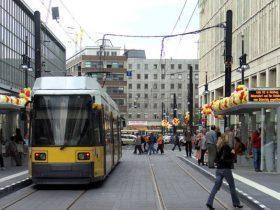Mobility-as-a-Service has the potential to enhance commuter travel and contribute to Singapore’s vision of a “car-lite” city.
General Motors’ Futurama exhibit at the 1939 World’s Fair in New York City offered a vision of mobility made possible by the comfort and convenience of motor vehicles. Many ideas introduced in Futurama have since shaped the built environment around the world as cars and car ownership came to dominate the city. Road networks, motorways and ring roads now define the structure of many cities. Almost 80 years later, this car-centric utopia has brought severe side-effects, including pollution and traffic congestion.
In many modern metropolises, car ownership is no longer practical, nor desirable, but improved mobility is needed more than ever. Singapore’s urban planners have envisioned a car-lite future in which residents depend less on private car ownership and travel mainly via cycling, walking and public transport. Land, once set aside for roads and parking spaces, could instead be used for other purposes. Mobility-as-a-service (MaaS) is one such innovation that could support the car-lite push.
Shifting commuter preferences
MaaS brings together public transport with private sector offerings such as ride-sharing and bike-sharing together on one platform. By integrating end-to-end trip planning, booking, electronic ticketing, and payment services across all modes of transportation—be it public, private or on-demand—MaaS can facilitate seamless travel and help mitigate some first-mile and last-mile challenges.
As our transit infrastructure continues to evolve, both our habits and ways of getting around are also shifting. Our view of the “last mile” has changed over time and how we interact with technology is changing our mobility future, which may help the adoption of MaaS, as commuters increasingly favour access to services over ownership1.
Dr Maria Kamargianni, Assistant Professor in Transport and Energy and Head of MaaSLab, Energy Institution at University College London, agrees. “Car ownership is not that popular anymore. It causes a lot of pain points and it increases a lot of expenses of the households”, she explains.
A shift in commuter preferences may already be happening. A recent Land Transport Authority (LTA) survey showed that trips made via private vehicles dipped for the first time in almost two decades in 2016, while public transport journeys hit a record high in the same year2. Users can also benefit from the convenience when it comes to payment as they can easily pay via a single interface.
Besides enhancing the travel experience of commuters, MaaS can improve the city by reducing vehicle ownership and the need for car parks, in turn bringing down traffic congestion. Public spaces can then be redesigned to be more pedestrian-oriented and cyclist-friendly. Of course, fewer cars on the roads would also translate to better air quality and a reduced carbon footprint.
Global application of MaaS
MaaS has already made inroads in various cities around the world, albeit at the prototype stage. In the United States, ride sharing companies Via, Lyft and Uber are testing out MaaS by offering shared passes that integrate other forms of transportation such as bicycles and electric bikes, and are beginning to integrate public transport.
Sampo Hietanen, the co-founder of Finnish company MaaS Global, explains that one of the main challenges of MaaS adoption is getting public and private players on board, which requires data sharing among partners to be able to integrate ticketing and payment services, as well as streamlined regulation to create a level playing field.
Hietanen also believes that one key element that many MaaS operators have missed is the element of freedom, which MaaS Global’s app, Whim, hopes to address. Whim allows residents to plan and pay for all modes of public and private transportation from its platform. In Helsinki, where Whim has been on trial since 2016, users can choose between a pay-as-you-go plan, or pay €49 ($75) per month for a package that includes public transit, bike-share, and limited ride-sharing. A €499 per month package replaces personal car ownership by including unlimited taxi and car-sharing.
“Within the subscription world, to be able to really compete against car ownership, there has to be an element of individual freedom. That means we will not have only one subscription to fit them all. The idea is to have a huge variety, from the really high-end packages to really affordable ones. But the same basic idea has to be there – that you have a sense of freedom anywhere, anytime, on a whim”, Hietanen explains.
“We envisage Singapore to be the first real big city where we get to really show the world how disruption in transportation really looks like – bringing convenience, individual freedom, but also system benefits. And the city has a chance of looking better”, Hietanen says.
Potential of MaaS in Singapore
“Urban planning plays an important role when it comes to the success of MaaS”, says Colin Lim, CEO of mobilityX, a SMRT seed-funded start-up that aims to provide MaaS solutions to both commuters and companies.
MobilityX is currently working with Nanyang Technological University (NTU) and JTC Corporation to pilot a MaaS project through Jalan and JalanX. Jalan is an app that integrates train and bus networks with next-generation transport modes, including autonomous vehicles, bicycle-sharing systems and personal mobility devices such as e-scooters, while JalanX is an experimental on-demand bus service serving NTU’s campus and JTC’s CleanTech Park, connecting them to residential estates.
On the NTU campus, Lim and his team are exploring the idea of building car parks at each of the university’s defined entrances, where commuters can park their cars and continue their journey within the campus using other transport modes. With a good internal transport system consisting of shared scooters, bikes, on-demand bus services, and autonomous vehicles, a car-lite framework would be more feasible, he explains.
LTA is already rolling out dedicated cycling networks across public housing estates and is redesigning road spaces to be more pedestrian-oriented and cyclist-friendly3. With more people-friendly infrastructure, MaaS has the potential to facilitate seamless point-to-point journeys. One example of this might be building stations for shared scooters and bicycles at MRT stations, which would allow consumers to unlock a shared bike, cycle to the MRT station and board the train seamlessly, Mr Lim says.
With a wide range of transport services already available in Singapore, Dr Kamargianni believes that the country will be able to meet commuter demand if MaaS is launched. With the country’s high population density, and strict policies on car ownership and car growth, effective implementation of MaaS is possible, but only if the issue of combining all existing modes of transport can be integrated on into a single platform can be resolved, she explains.
Hence, MaaS has the potential to contribute towards Singapore’s car-lite vision by inducing people to drive less, or perhaps not get a car at all, which would free up land resources and reduce pollution by shifting commuters towards more sustainable forms of transport. However, policymakers must continue to work closely with transport operators, data providers and research bodies to ensure its effective and efficient implementation.
Link: https://www.ura.gov.sg/Corporate/Resources/Ideas-and-Trends/Mobility-as-a-Service
Source: https://www.ura.gov.sg
















Leave a Reply